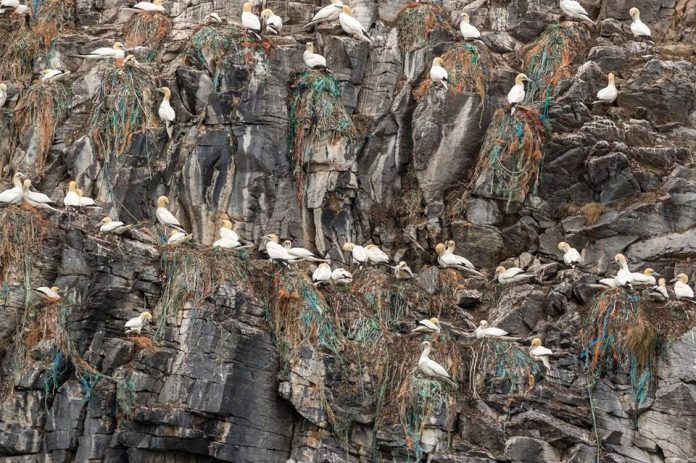Photos of a nesting cliff, where nearly every seabird has built a nest of discarded fish nets and rope has caused revulsion in Norway. With the industry fighting for its reputation, marine garbage ought to be taken very seriously.
Look carefully at the stand-alone photo above. It shows seabirds squawking from nests of plastic on a cliff at Runde in the Sunnmore region of western Norway,
The photos were published recently by national news service, NRK, and they’re hard viewing. A growing number of people are fast being engaged by the issue of ocean trash, especially plastics. As a user and manager of shared sea resources, it’s clear marine pollution is something the aquaculture industry needs to watch closely and to tackle with great seriousness.
Many see red when they deduce that an enterprise is earning a lot of money exploiting shared marine acreage while also polluting. Although the aquaculture industry isn’t the primary source of seaborne plastics, and doesn’t need to own the issue, it could be forced to tackle it. It might snowball. Ten years ago, no one thought sea lice could stop production or cost the industry over EUR 1 billion a year.
If a “small-scale” fish-farmer can earn EUR 10 million per year by farming 5,000 tonnes of salmonids, then some, at least, ought to be able to afford a community clean-up. Be wary, however, of the counselled PR suggesting the beach clean-up be turned into a press release saying, “We’re cleaning up after ourselves”.
Cleaning-up is an ordinary civic responsibility. It’s far from newsworthy.
And, it could backfire.

